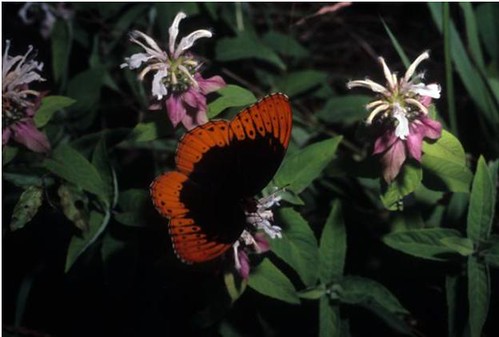Written by Rick Borchelt
Butterflies are a great barometer of the health of our environment – because they spend part of their lives as caterpillars eating leaves and other vegetation, and part as adults visiting flowers and other food sources, they can be exposed to many contaminants that give us an early warning of problems in the ecosystem. Butterflies are often used as an early signal that critical habitat is being eroded or lost because many of them are finicky about the kind of habitat they require and have a narrow range of plants they can feed on.
The North American Butterfly Association (NABA) each summer conducts a series of midsummer butterfly counts to survey the health of the butterfly populations around the country. The U.S. National Arboretum in Washington is the host for one of those counts, and the public is invited to join us to help conduct this census!
In cooperation with the Washington Area Butterfly Club, the public is invited to enjoy the beautiful grounds of the Arboretum while contributing to butterfly study and conservation as participants in the annual District of Columbia 4th of July Butterfly Count on Saturday, July 17 from 9 a.m. to 4 p.m. In case of rain, the event will be held on July 18.
The event has taken place every year since 1998. The Arboretum is administered by the Agricultural Research Service, the U.S. Department of Agriculture’s principal intramural scientific research agency.
The fee to participate is $3, which will go to the NABA to cover the costs of coordinating the counts and compiling data. Participants will meet at the arboretum’s visitor center parking lot near the main entrance on R Street. Counting will continue until late afternoon, depending on the heat, to allow time to compile a list of sightings.
No previous experience in butterfly counting is necessary. However, the event is not recommended for children under the age of 12 due to high temperatures and tall, brambly vegetation. Comfortable clothing and shoes covering arms and legs are recommended to prevent insect bites and contact with poison ivy. Sun block, insect repellant, food, drink and a hat are also highly recommended. Participants may bring cameras to photograph butterflies and arboretum gardens and exhibits.
Counting will take place only within the arboretum grounds, which encompass a wide variety of habitats. Areas of focus will be the National Herb Garden and adjacent fields, Fern Valley, the Washington Youth Garden, the road along the Anacostia River and adjacent fields, and the meadow and fields at the arboretum’s center. No nets can be carried or used during the counting, and participants are asked to please stay on designated paths or trails within each garden or collection.
Visit www.usna.usda.gov for detailed directions to and additional information about the Arboretum.

